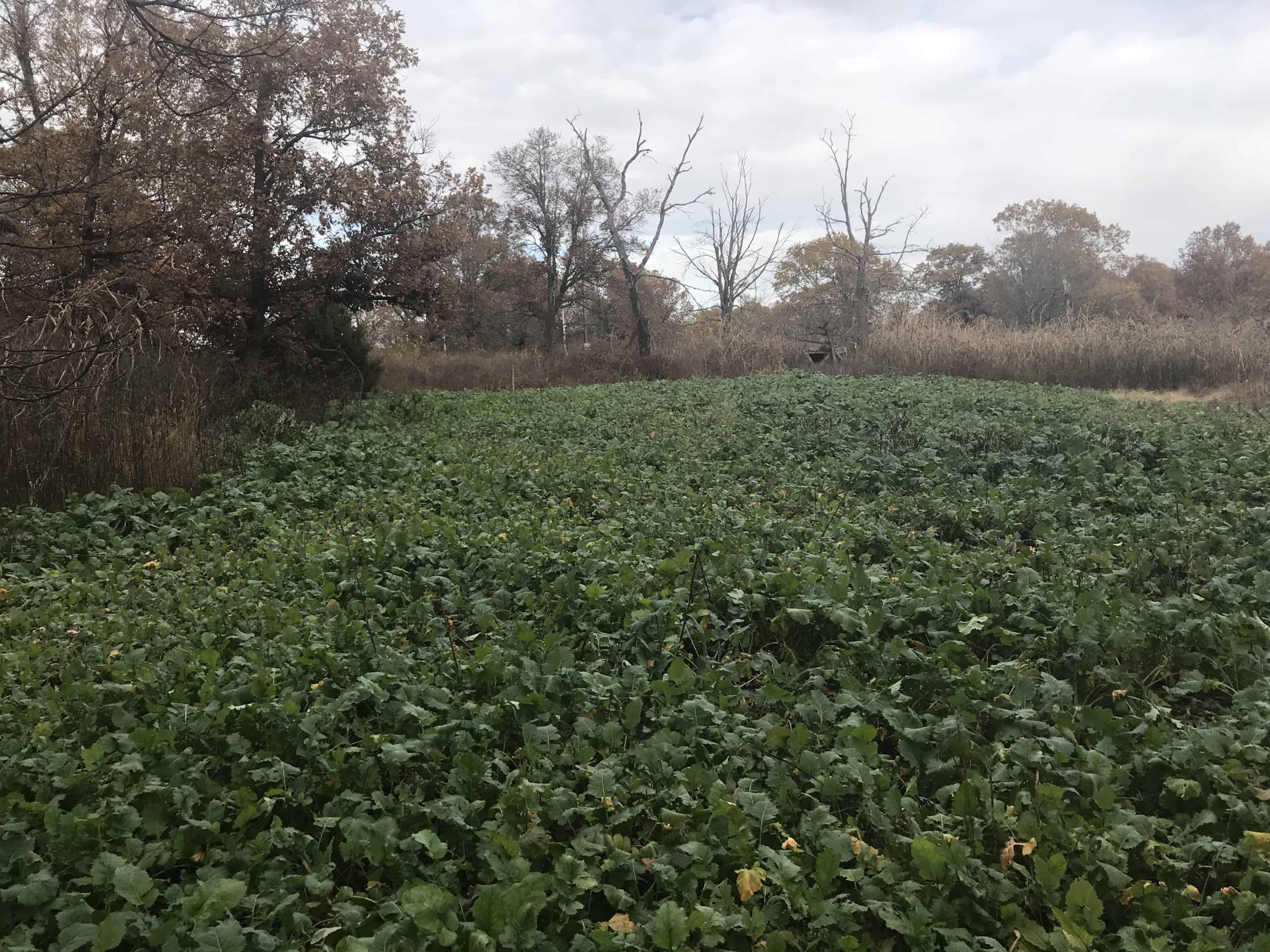If you are looking to take your hunting property to the next level then you should consider creating screens on your land for better hunting opportunities. Screens can make or break if you have a successful hunt or not. Learn what you can about screens and the different options available for installing them so you can implement them on your land. Doing this will increase your odds of success on your hunting property. So, what is a plot screen?
A plot screen is also referred to as a food plot screen or a deer screen. The objective of a plot screen is to create a visual barrier between deer and humans. If deer cannot see human activity, then are more likely to walk out into open areas such as food plots. Additionally, having a screen along the edge of deer bedding areas can provide an opportunity for hunters to stay hidden from deer as they enter and exit hunting locations.
If deer can see you enter and exit your hunting locations, the quality of your hunts will get worse over the course of deer season. Therefore, make sure you have a good screen to hide behind. But how do you know which type of screen you need? In this article I will describe the different types of screens you can implement on your property, questions to ask yourself when deciding which screen to go with, and a few tips to help you avoid making mistakes.
What is the best food plot screen?
The best food plot screen is based on what your goals are and what the land can support. In other words, the best food plot screen may not be the best type of screen for your specific situation. However, the best screens will make deer feel safe and successfully block them from seeing you, or any other human, all year long. The best screens are those that need to be created once and last many years. Lastly, the best screens will be strategically positioned in a location that supports your overall hunting and land management strategy.
When selecting the best screen for your specific situation, it comes down to time, money, what the land allows for, and your overall hunting and land management strategy. There are several screen options available for you to implement that I divided into two categories (see below). Those categories are long-term screens and short-term screens.
I suggest installing long-term screens most of the time because short-term screens last for less than a year before they need replanted and they also don’t stand up throughout the entire hunting season. Long-term screens last for several years and are usually worth the time and money spent installing them. However, if you need a screen to be in place for the upcoming hunting season then the short-term screens are probably your best bet because they are quick growing. Here are the screening options I recommend:
Long-Term Screens (Preferred)
- Bulldoze a berm
- Pine, cedar, or spruce trees
- Switchgrass
- Shrubs or bushes
- Miscanthus giganteus
- Hinge-cuts
- Fence
Short-Term Screens (Not Preferred)
- Corn
- Sorghum
- Egyptian wheat
- Winter Rye (Planted in the spring)
Which screen should I plant?
Unfortunately, choosing the right screen is something you are going to have to decide on your own or with the help of a land consultant like myself. As I mentioned earlier in this article, the screen you choose is going to be based on your goals and what the land can support.
Here are a few questions to ask yourself when deciding which screen to implement on your property:
- How much time do I have?
- Am I willing to wait for the screen to be in place a year or more from now?
- Do I need the screen to be in place for this hunting season?
- Will I need to hire help to install the screen or am I doing it myself?
- What’s my budget?
- What will grow well at this location?
- Does the land flood?
- Are there any neighbors or easement restrictions that could impact my plans?
- How far away from the road does the screen need to be?
- How does this screen fit in with my overall hunting and land management plan?
Tips to avoid mistakes
When you decide which screen(s) you are going to implement on your property, make sure you do a little research beforehand. This will help you avoid making mistakes and you can learn tips on how make the whole process go smoother. You might even learn ways to save time and money on the project.
If you are hiring help then try to get a couple different quotes to compare prices. Confirm that whoever you are hiring actually has the experience doing what you are hiring them to do.
If you are planting trees, make sure you are planting them in the regions of the country and areas where they will survive. You should follow planting instructions and protect the trees from animals like deer.
Regardless of what you plant be sure to follow the specific planting directions for those plants. For example, if you try to plant switchgrass without a weed control program, you will most likely not grow the quality screen you were wishing for.
If you are creating a screen by hinge-cutting trees then I recommend talking with a forester beforehand to make sure you are not killing marketable trees that you could sell for income.
Try to avoid planting screens that deer will enjoy eating. In most situations you won’t want the deer to be attracted to the edge of that screen where you could potentially scare them off while entering or exiting an area. That would completely work against your goal of having that screen there in the first place.
If you plan on planting a short-term screen then don’t count on that screen standing tall at the end of hunting season. If your goal is to have a screen in place for a late season hunt then you will probably be disappointed. Short term screens work well for October and early November hunts.
A screen can only keep deer from seeing you. It won’t block your wind from blowing in their direction or prevent them from hearing you. Always do what you can to prevent deer from hearing, seeing, or smelling you.
A screen’s location should always fit in with your overall hunting and land management strategy. If you’re not sure how you feel about your strategy then read my article about how to set up a property for deer hunting.

